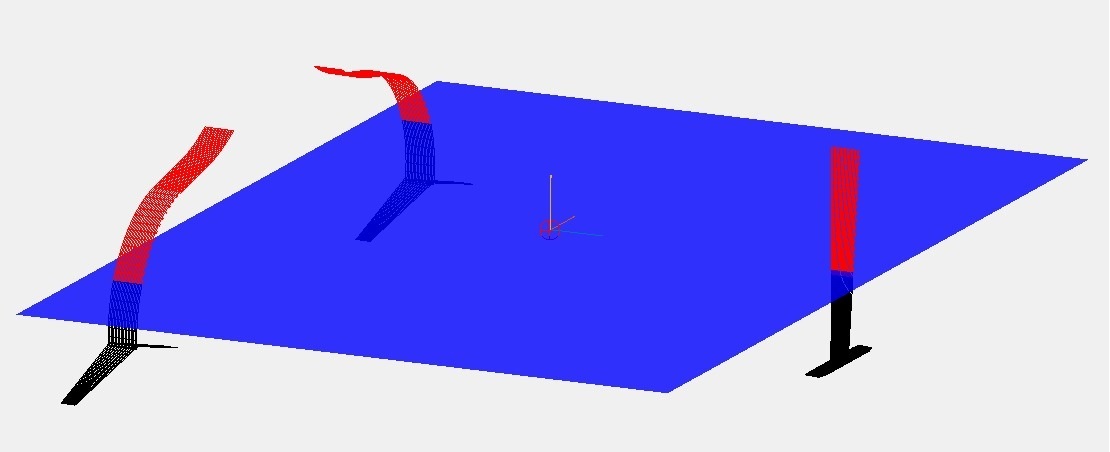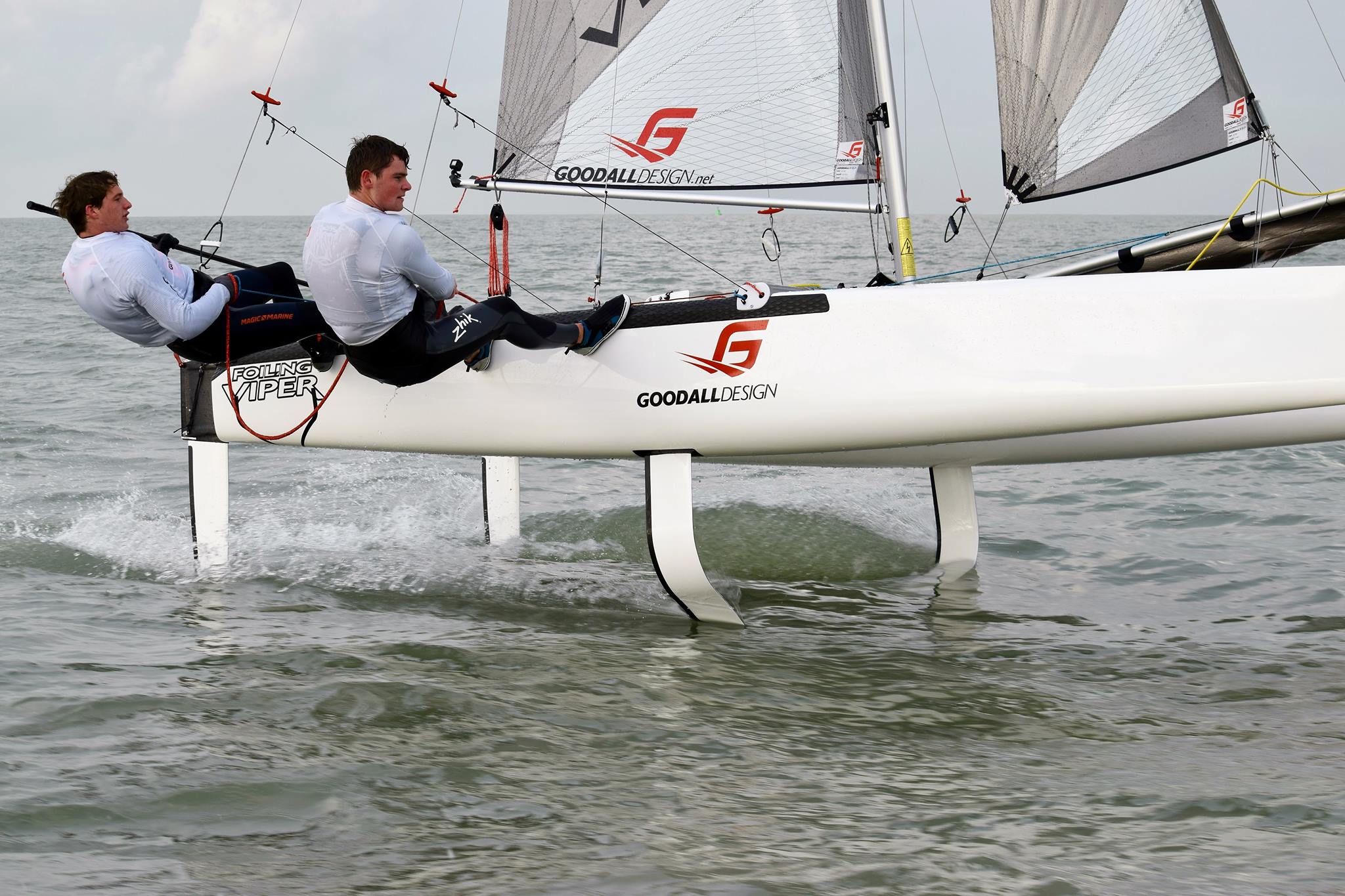Typhoon
 Typhoon is an open-source implementation of the vortex-lattice method to perform a dynamic stability analysis for hydrofoil crafts. The goal is that the code should be able to handle the dynamic stability analysis of different types of hydrofoil designs. It is primarily focused on being a tool to be used in a preliminary design stage to get a better understanding on how design parameters influence the dynamic stability. Through the use of the vortex-lattice method some accuracy is compromised in favour of a lower calculation cost. This loss in accuracy is mostly due to the non-existing viscous effects in potential-flow theory. This however enables to swiftly compare the dynamic behaviour of different designs at different conditions. As such this tool can be used by industry leaders and by amateurs alike. The code allows to define the geometry of the appendages which form the supporting structure in the air-borne mode. Only these appendages need to be defined as most components above the water (e.g. hull) do not contribute to dynamic behaviour directly as long as the vessel is in air-borne mode. External forces from engines or sails can be defined and included in the calculations. Along with the definition of the (foil) geometry there is also a possibility to define the conditions like speed, trim, draft (or foil submergence)... This again is an important feature as it allows to understand how a vessel can be optimised for different sailing conditions (e.g. high-peed vs low-speed).
Typhoon is an open-source implementation of the vortex-lattice method to perform a dynamic stability analysis for hydrofoil crafts. The goal is that the code should be able to handle the dynamic stability analysis of different types of hydrofoil designs. It is primarily focused on being a tool to be used in a preliminary design stage to get a better understanding on how design parameters influence the dynamic stability. Through the use of the vortex-lattice method some accuracy is compromised in favour of a lower calculation cost. This loss in accuracy is mostly due to the non-existing viscous effects in potential-flow theory. This however enables to swiftly compare the dynamic behaviour of different designs at different conditions. As such this tool can be used by industry leaders and by amateurs alike. The code allows to define the geometry of the appendages which form the supporting structure in the air-borne mode. Only these appendages need to be defined as most components above the water (e.g. hull) do not contribute to dynamic behaviour directly as long as the vessel is in air-borne mode. External forces from engines or sails can be defined and included in the calculations. Along with the definition of the (foil) geometry there is also a possibility to define the conditions like speed, trim, draft (or foil submergence)... This again is an important feature as it allows to understand how a vessel can be optimised for different sailing conditions (e.g. high-peed vs low-speed).
General introduction on Typhoon by Alec Bagué:
 The use of hydrofoils has been around for a long time but has recently experienced some kind of renaissance. This can for a large part be attributed to the introduction of hydrofoils in the America's Cup in 2013 but what are hydrofoils and what do they do? Hydrofoils are, similar to the wings of an airplane, structures which, when placed under a certain angle of attack in a fluid flow, generate lift. This lift can then partly or completely replace the buoyant force of a vessel, which means as much as "the vessel starts flying". Some of the most notable advantages are the ensuing drag reduction and the decoupling of the vessel's movement from waves as the hull now flies above the water surface.
Assessing the stability of a ship with and without hydrofoils are two very distinct practices. That is why we put out an effort to develop a framework to perform a dynamic stability analysis to be able to quantify dynamic characteristics and to be able to quickly compare the influence of design parameters on the stability behaviour. To support this framework we develop the easy to use software Typhoon based on the vortex lattice method.
The use of hydrofoils has been around for a long time but has recently experienced some kind of renaissance. This can for a large part be attributed to the introduction of hydrofoils in the America's Cup in 2013 but what are hydrofoils and what do they do? Hydrofoils are, similar to the wings of an airplane, structures which, when placed under a certain angle of attack in a fluid flow, generate lift. This lift can then partly or completely replace the buoyant force of a vessel, which means as much as "the vessel starts flying". Some of the most notable advantages are the ensuing drag reduction and the decoupling of the vessel's movement from waves as the hull now flies above the water surface.
Assessing the stability of a ship with and without hydrofoils are two very distinct practices. That is why we put out an effort to develop a framework to perform a dynamic stability analysis to be able to quantify dynamic characteristics and to be able to quickly compare the influence of design parameters on the stability behaviour. To support this framework we develop the easy to use software Typhoon based on the vortex lattice method.